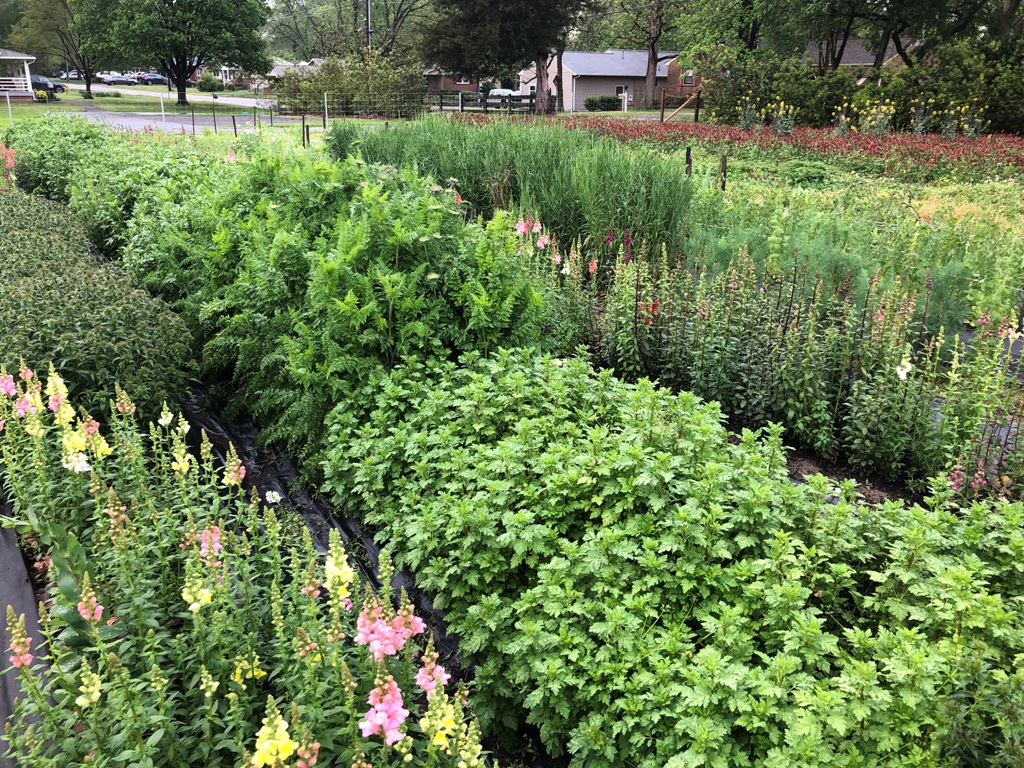
Did you know that early fall can be the toughest and most costly season for cut-flower growers? Once exhaustion and overwhelming feelings manifest themselves into “just let the season end…”, we are literally set up to make the costliest mistake of the year.
What is this costly mistake? Either skipping or coming late to fall preparation and planting of cool-season hardy annuals. I know this happens a lot because my inbox is stacked every winter with emails from growers asking for solutions on how to overcome this error.
Which flowers am I talking about and are they really worth growing? The list includes bells of Ireland, sweet peas, snapdragons, poppies, larkspur, and others. This family of plants includes some of the most in-demand flowers that also bloom during the highest-demand season: spring.
No cut-flower grower should be without them. Cool-season hardy annuals became some of the earliest and most significant cash crops on my flower farm.
Lisa Ziegler, The Gardener’s Workshop
These plants don’t just survive cool to cold weather; they thrive in it. They are easy to grow when planted on their optimal timeline — which is either in fall or very early spring. When and which flowers to plant depends on your location and each plants’ winter hardiness zones. If a plant is winter-hardy in a given zone, it should be fall-planted. If it is not winter-hardy in a given zone, plant it in very early spring.


I wrote the book, Cool Flowers about how to grow this family of flowers.
It includes 30 featured flowers, winter hardiness zone information, fall and very early spring planting times, and more.
Since the book was published in 2014, I have created several companion resources:
- The book: Cool Flowers
- Request the free video Book Study
- Request the free webinar Cool Flowers Refresher
- View The Cool-Season Flower Chronicles series
- The online course: Cool Flowers, Beyond the Book for Flower Farming
- Request the free Planting Guide
A tip that has helped me to focus on and succeed with Cool Flowers: while I am not a detailed planner, I do have a good idea in January where my cool flower collection will be planted the following fall and very early the next spring. This simple planning step guides me all summer, through a season of succession plantings, keeping cool flowers on the forefront of my mind.

As you dive in to learn more about growing cool-season hardy annuals, don’t forget to make time for them. The only true failure with this family of plants is not planting them because you are tired and weary after a long season.
Commercial cut-flower growing, like all businesses, is by nature all-consuming. To succeed and grow our businesses we must seek knowledge and learn how to manage and focus on the significant pieces that require our time and attention — because they benefit the business.

I’ve learned from my students that oftentimes their workdays are consumed by tasks and chores that really don’t benefit their business’s bottom line at all. They are filled with tasks they felt had to be done based on business inexperience or having a gardening perspective rather than a commercial cut-flower grower’s perspective. This is a leading cause of feeling overwhelmed and a common reason many quit this business.
To fully embrace starting, building, or expanding a cut-flower operation, we must balance the growing portion that tends to consume us, with the managing and business parts that are essential pieces. It is so easy to feel like the flowers are the most important, but in fact, they are just one piece. Without managing your business, there would be no flower farming business.
I found that the key to success for my business was streamlining my growing operation and to focus on what benefited it most: the bottom line. Making time to plant and tend this significant crop group, cool-season hardy annuals, sits at the top of that list.
If you’d like to learn more about flower farming as a business, check out my online course Flower Farming School Online: The Basics, Annual Crops, Marketing, and More! This course is my roadmap to becoming a successful flower farmer or how to hit the reset button on an existing flower farming business. Get on my wait list for annual enrollment October 1-5, 2021.
Hope our paths cross!

